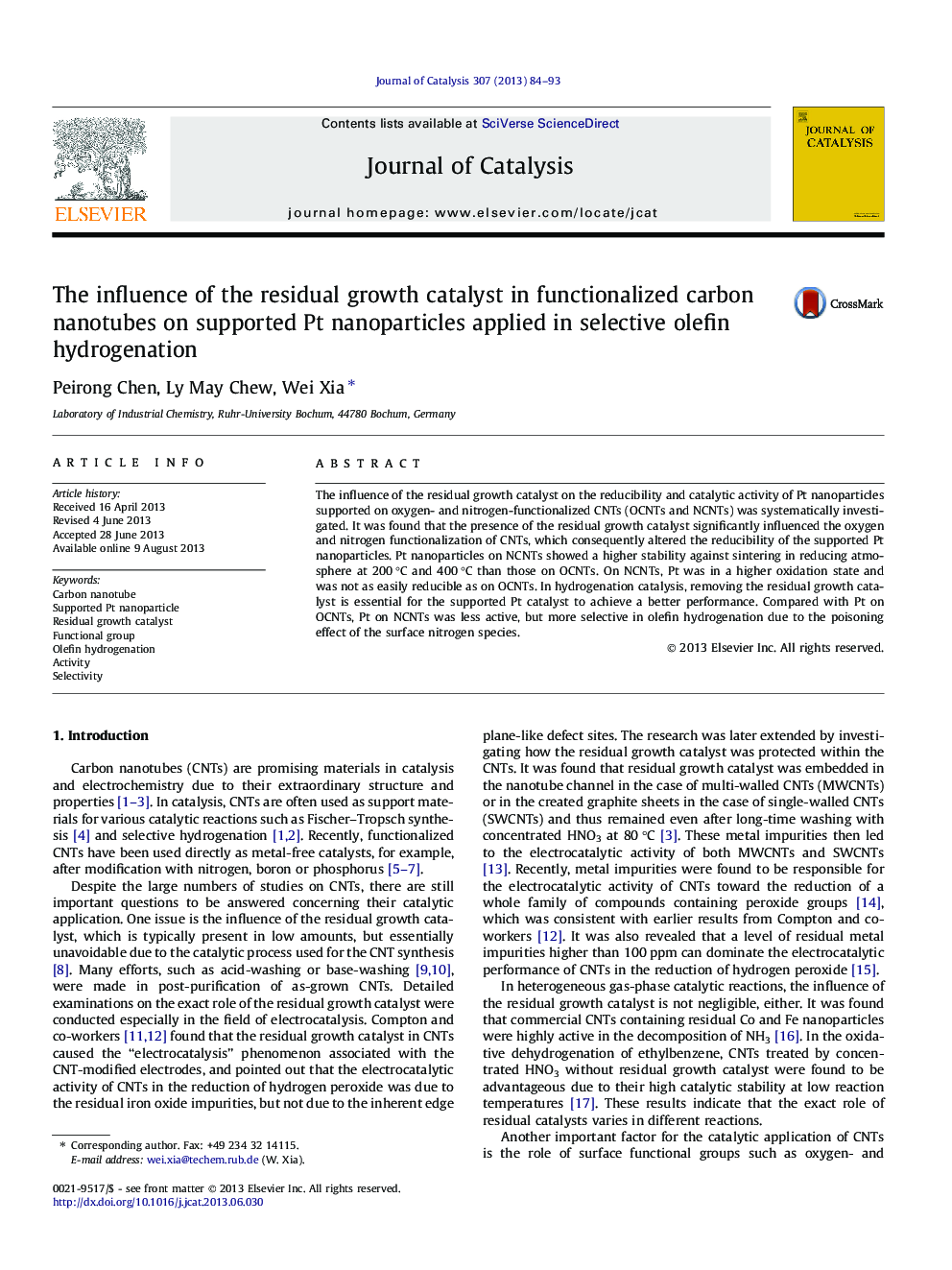| Article ID | Journal | Published Year | Pages | File Type |
|---|---|---|---|---|
| 61149 | Journal of Catalysis | 2013 | 10 Pages |
•Residual growth catalyst strongly influences the surface functionalization of CNTs.•Removing the residual catalyst in CNTs is essential for Pt catalyst in hydrogenation.•Pt on NCNTs is stabilized in a smaller particle size and a higher oxidation state.•Pt on NCNTs is less active but more selective in olefin hydrogenation than on OCNTs.
The influence of the residual growth catalyst on the reducibility and catalytic activity of Pt nanoparticles supported on oxygen- and nitrogen-functionalized CNTs (OCNTs and NCNTs) was systematically investigated. It was found that the presence of the residual growth catalyst significantly influenced the oxygen and nitrogen functionalization of CNTs, which consequently altered the reducibility of the supported Pt nanoparticles. Pt nanoparticles on NCNTs showed a higher stability against sintering in reducing atmosphere at 200 °C and 400 °C than those on OCNTs. On NCNTs, Pt was in a higher oxidation state and was not as easily reducible as on OCNTs. In hydrogenation catalysis, removing the residual growth catalyst is essential for the supported Pt catalyst to achieve a better performance. Compared with Pt on OCNTs, Pt on NCNTs was less active, but more selective in olefin hydrogenation due to the poisoning effect of the surface nitrogen species.
Graphical abstractIn olefin hydrogenation, residual growth catalysts in CNTs have negative influence on the activity of supported Pt, whereas surface nitrogen groups are favorable for a high selectivity.Figure optionsDownload full-size imageDownload high-quality image (83 K)Download as PowerPoint slide
